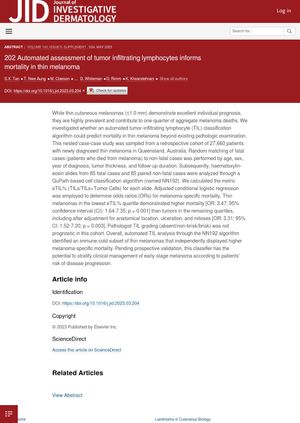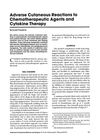Automated Assessment of Tumor Infiltrating Lymphocytes Informs Mortality in Thin Melanoma
April 2023
in “
Journal of Investigative Dermatology
”

TLDR An automated system can predict death risk in thin melanoma by analyzing immune cells.
The study investigated the use of an automated tumor-infiltrating lymphocyte (TIL) classification algorithm, NN192, to predict mortality in thin melanoma. The study involved a retrospective cohort of 27,660 patients with newly diagnosed thin melanoma in Queensland, Australia, and analyzed slides from 85 fatal cases and 85 paired non-fatal cases. The study found that thin melanomas in the lowest quartile of eTIL% (a metric calculated as TILs/TILs+Tumor Cells) demonstrated higher mortality (OR: 3.47; 95% CI: 1.64-7.35; p = 0.001) than tumors in the remaining quartiles. This remained true even after adjustment for anatomical location, ulceration, and mitoses (OR: 3.31; 95% CI: 1.52-7.20; p = 0.003). The study concluded that the NN192 algorithm identified an immune-cold subset of thin melanomas that independently displayed higher melanoma-specific mortality, suggesting its potential to stratify clinical management of early-stage melanoma according to patients’ risk of disease progression.





